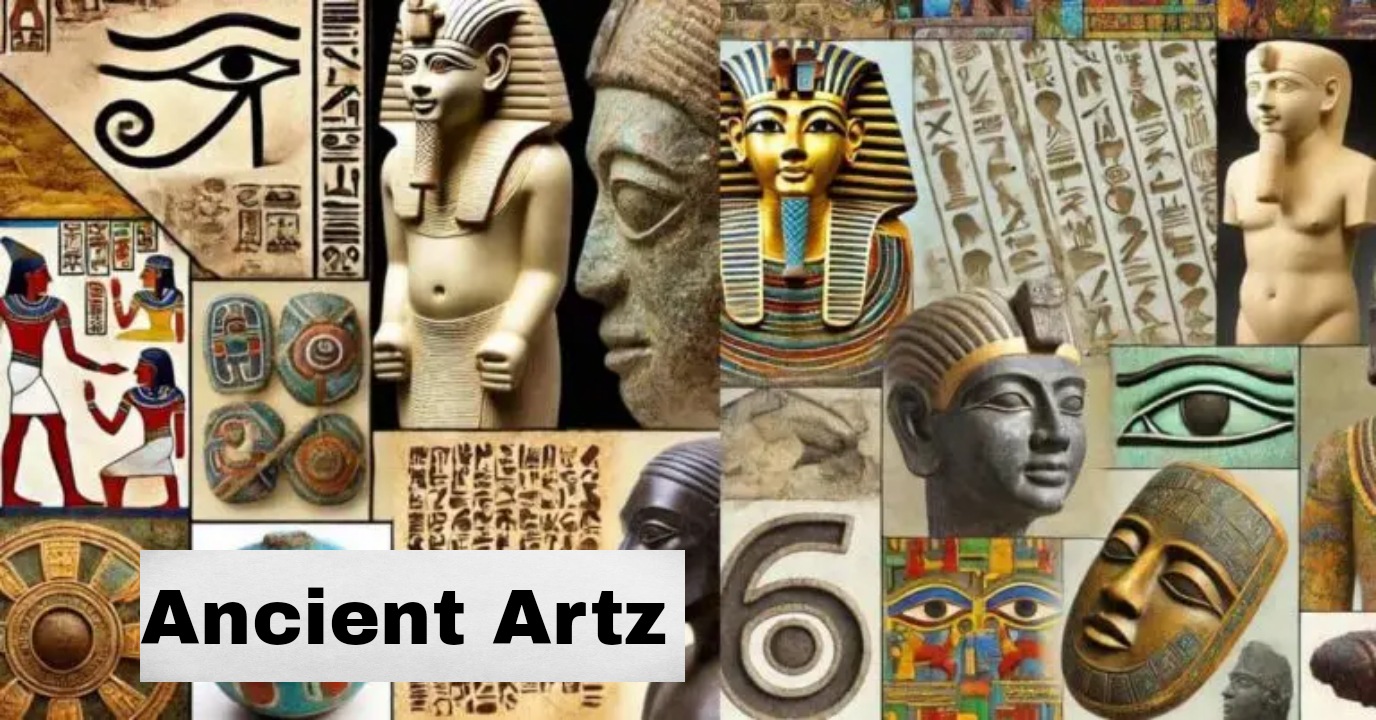Ancient Artz: A Journey Through Timeless Masterpieces
In the vast tapestry of human history, few threads are as richly colored and intricately woven as the realm of ancient art. From the enigmatic symbols etched into cave walls to the grand frescoes that adorned the palaces of empires, ancient art serves as a window into the cultures, beliefs, and aesthetics of bygone civilizations. In this article, we delve into the fascinating world of “Ancient Artz,” exploring its significance, evolution, and the ways it continues to captivate and inspire modern audiences.
What is Ancient Artz?
Defining Ancient Artz
Ancient Artz refers to the artistic expressions created by early civilizations across different parts of the world. This term encompasses a diverse array of mediums, including sculpture, painting, pottery, and textiles, produced from prehistoric times through the early medieval period. These works not only showcase the technical prowess of ancient artists but also offer profound insights into their spiritual beliefs, social structures, and daily lives.
The Importance of Ancient Artz
The significance of Ancient Artz lies in its ability to bridge the gap between past and present. These artworks are not mere relics; they are vibrant records of human experience and creativity. By studying ancient art, historians and archaeologists can decode the symbolism, cultural practices, and technological advancements of ancient societies, enriching our understanding of their worldviews and artistic achievements.
The Evolution of Ancient Artz
Prehistoric Art
The journey of Ancient Artz begins with prehistoric art, which includes the earliest known artistic expressions. Cave paintings, such as those found in Lascaux and Altamira, offer a glimpse into the lives of early humans. These artworks often depict hunting scenes and animals, suggesting a deep connection between the artist and their environment. Additionally, the intricate carvings on stone tools and the abstract patterns found on ancient pottery highlight the early development of artistic skills and symbolism.
Ancient Egyptian Art
Egyptian art is renowned for its distinctive style and symbolic meaning. Spanning over three millennia, this art form includes elaborate tomb paintings, statues of gods and pharaohs, and intricate hieroglyphics. The purpose of Egyptian art was largely religious and funerary, designed to ensure a successful journey to the afterlife and to honor deities. Iconic works such as the statues of Ramses II and the artwork found in Tutankhamun’s tomb reflect the grandeur and spiritual beliefs of ancient Egypt.
Greek and Roman Art
The art of ancient Greece and Rome represents a pivotal evolution in Western artistic traditions. Greek art, particularly during the Classical period, is celebrated for its emphasis on proportion, balance, and idealized forms. The sculptures of figures like the Discobolus (Discus Thrower) and the Parthenon friezes exemplify this pursuit of perfection. Roman art, while heavily influenced by Greek precedents, introduced innovations in portraiture and realism, as seen in the busts of emperors and the intricate mosaics of Pompeii.
Asian and Indian Art
In Asia, ancient art manifests in diverse forms, reflecting the region’s rich cultural and religious heritage. Indian art, from the intricate carvings of the Ajanta and Ellora caves to the elaborate sculptures of Hindu temples, demonstrates a deep engagement with spiritual and mythological themes. Meanwhile, Chinese art, including early bronze vessels and the delicate porcelain of later dynasties, illustrates a sophisticated understanding of material and design, often intertwined with philosophical and cosmological concepts.
Pre-Columbian Art
The art of ancient civilizations in the Americas, such as the Maya, Aztec, and Inca, offers a unique perspective on artistic expression outside the Old World. Maya art, characterized by its detailed glyphs and monumental architecture, reflects a complex society with advanced astronomical knowledge. Aztec art, including the iconic Sun Stone and elaborate featherwork, underscores the civilization’s emphasis on ritual and cosmology. Inca art, known for its intricate textiles and geometric patterns, reveals a highly organized society with a deep appreciation for craftsmanship.
Techniques and Materials in Ancient Artz
Sculpture and Carving
Sculpture has been a central aspect of ancient art, with techniques evolving from simple carvings to complex, life-like figures. Early sculptures were often carved from stone or bone, with tools made from flint or metal. In ancient Egypt, artists used materials like limestone and granite to create grand statues, while Greek sculptors perfected the use of marble to achieve detailed and realistic forms. The use of bronze, particularly in Greek and Roman sculptures, allowed for greater detail and durability.
Painting and Frescoes
Painting techniques varied widely among ancient cultures. In Egypt, frescoes were created using tempera on dry plaster, depicting religious and funerary themes. Greek painters developed techniques for adding depth and perspective, though most of their work has been lost. The Romans perfected the art of fresco painting, with vibrant colors and complex scenes found in Pompeii and Herculaneum. In China and India, techniques like ink wash painting and the use of vibrant pigments on silk and paper emerged, reflecting different aesthetic traditions.
Pottery and Ceramics
Pottery is one of the most enduring forms of ancient art, with each civilization developing distinctive styles and techniques. Early pottery was often functional, with simple designs and utilitarian shapes. As techniques advanced, potters created intricate patterns and forms, such as the fine red-figure pottery of ancient Greece and the highly decorative porcelain of Tang and Ming China. The study of ancient ceramics offers valuable insights into trade, daily life, and technological advancements.
The Legacy of Ancient Artz
Influence on Modern Art
The impact of Ancient Artz extends far beyond its historical context. Many modern artists and movements have drawn inspiration from ancient techniques and styles. The Renaissance, for example, saw a revival of classical forms and ideals, with artists like Leonardo da Vinci and Michelangelo looking to Greek and Roman art for guidance. Contemporary artists continue to reference and reinterpret ancient themes, blending them with modern sensibilities to create new expressions.
Preservation and Study
Preserving ancient art is a critical endeavor for historians and archaeologists. Efforts to protect and restore artworks from decay, vandalism, and looting are essential to maintaining our connection to the past. Museums and research institutions play a crucial role in this process, employing advanced technologies and techniques to study and conserve ancient artifacts. Public awareness and education about the significance of ancient art also contribute to its preservation.
The Role of Technology
Technology has revolutionized the study and appreciation of ancient art. Digital imaging, 3D modeling, and virtual reality allow researchers and enthusiasts to explore artworks in unprecedented detail. These tools enable the reconstruction of damaged pieces, the analysis of artistic techniques, and the immersive experience of historical contexts. Technology also facilitates global access to ancient art through online databases and virtual exhibitions, democratizing knowledge and fostering a broader appreciation of our shared heritage.
Conclusion
Ancient Artz is a testament to the enduring creativity and ingenuity of human civilization. From the earliest cave paintings to the grandeur of Egyptian temples, each piece of ancient art tells a story of its time, revealing the values, beliefs, and artistic achievements of its creators. As we continue to study and celebrate these timeless masterpieces, we not only gain a deeper understanding of our history but also find inspiration for our own creative endeavors. The legacy of Ancient Artz, rich with complexity and beauty, remains a vibrant part of our collective human experience.



